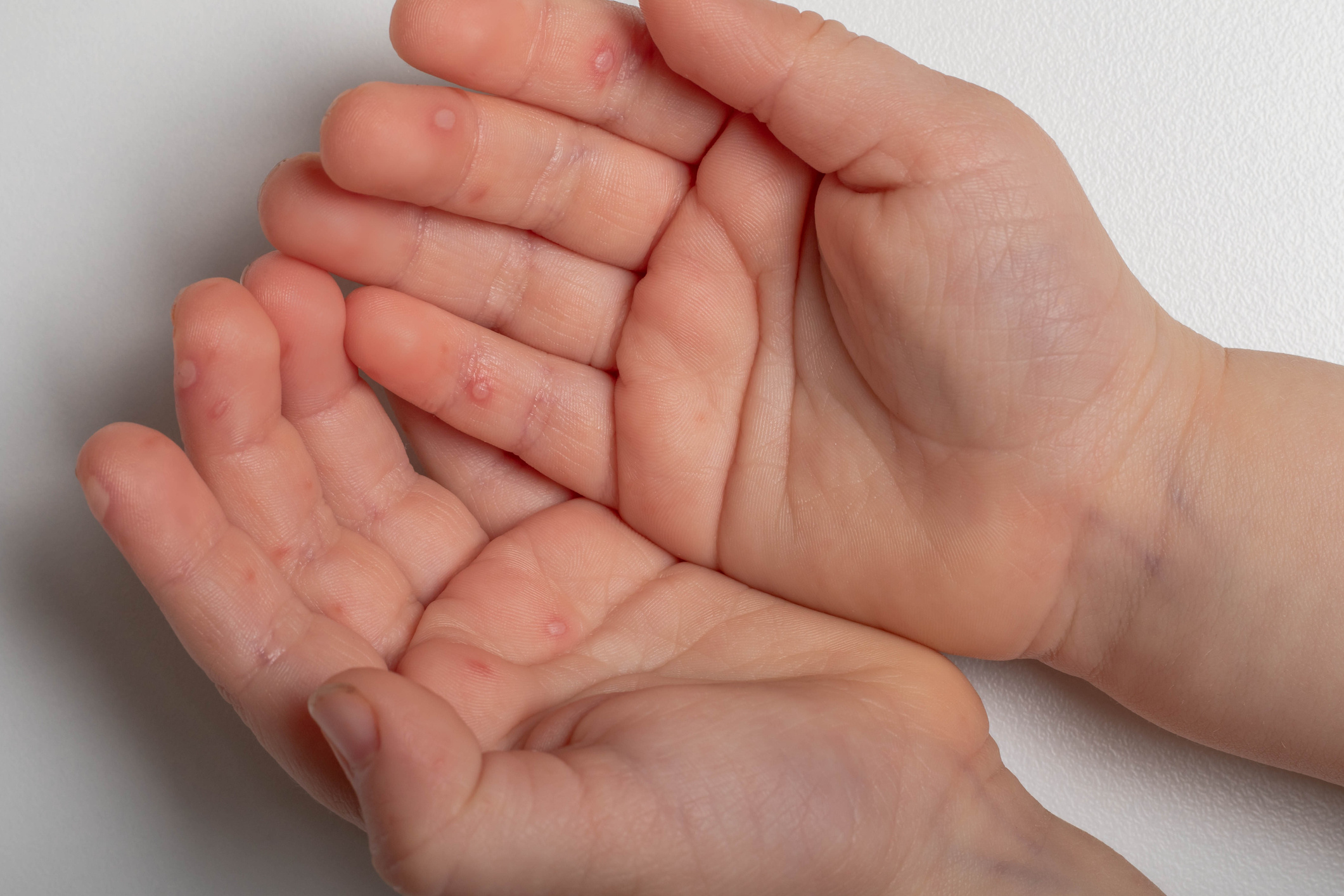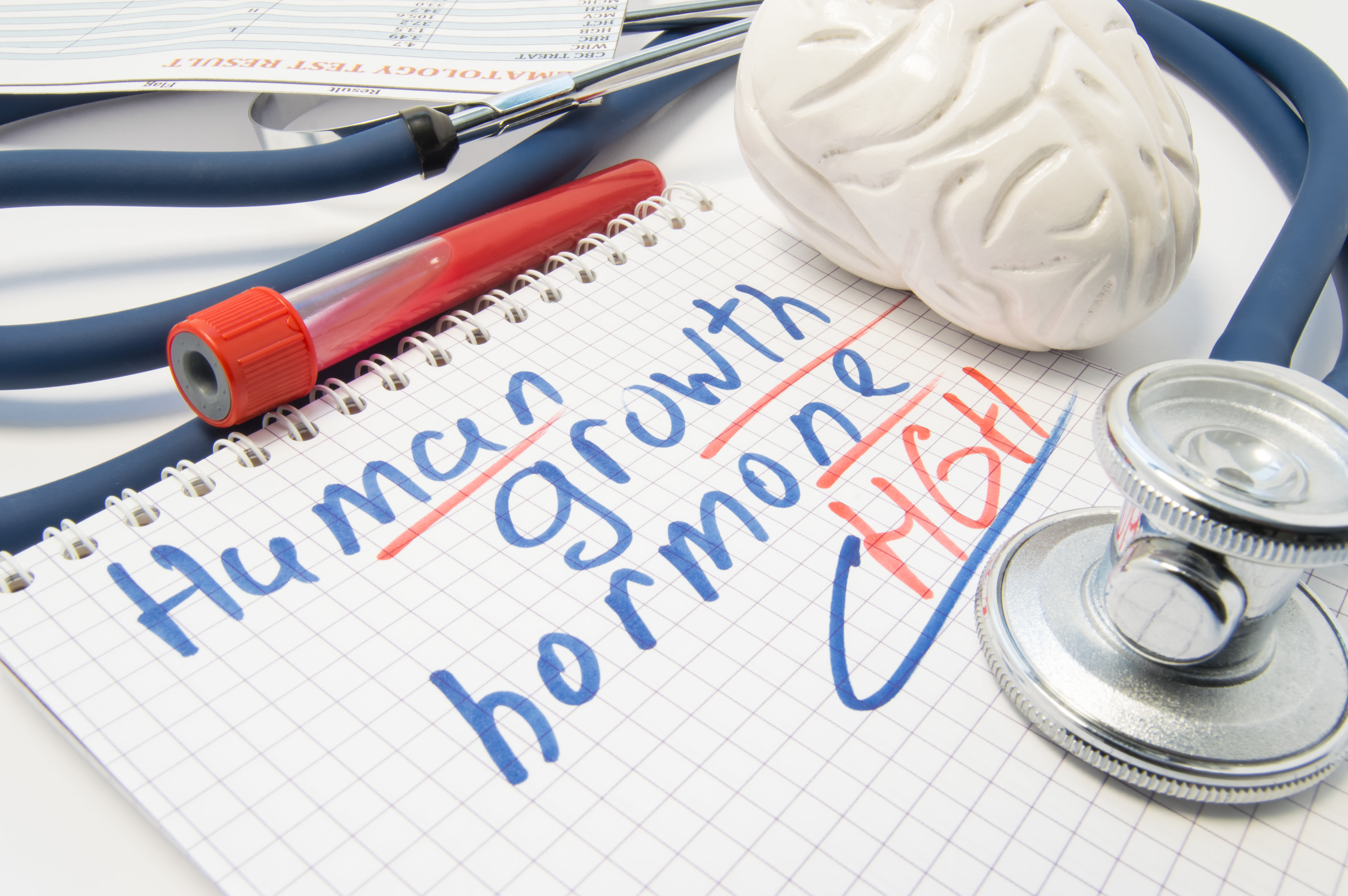
Sebahat Yılmaz Ağladıoğlu
She has been working as a pediatric endocrinology specialist at Anadolu Medical Center since 2017.
Speciality
- Pediatric Health and Diseases
- Pediatric Endocrinology
Education
University
- Ankara University Faculty of Medicine, Ankara 2002
Specialty
- Gazi University Faculty of Medicine, Department of Child Health and Diseases, Ankara 2009
Minor
- Specialization training Dr. Sami Ulus Gynecology, Child Health and Diseases Training and Research Hospital, Ankara 2013
Institutions Worked At
Assoc. Prof. Dr. Sebahat Yılmaz Ağdıoğlu graduated from Ankara University Faculty of Medicine in 2002. After completing her specialty education at Gazi University Faculty of Medicine, Department of Pediatrics, she started working as a minor assistant at Ankara Dr Sami Ulus Gynecology, Obstetrics and Diseases Training and Research Hospital in 2009. After becoming a pediatric endocrinology specialist in 2013, she completed her compulsory service at Pamukkale University Faculty of Medicine between 2013-2016 and continued to work there as an assistant professor. In 2014, she received training on pediatric endocrinology at London Great Ormond Street Hospital for Children with the scholarship of the European Pediatric Endocrine Society (ESPE).
After being awarded the title of associate professor in April 2016, she worked at Private Kurtköy Ersoy Hospital. Associate Professor Yılmaz Ağdıoğlu, who started working at Anadolu Medical Center in 2017, is still working as a pediatric endocrinology specialist.
- Turkish Medical Association
- Pediatric Endocrinology and Diabetes Association
- Pediatrics Specialization Academy Association (PUADER)
- European Society for Pediatric Endocrinology
- Ege University Diabetes Treatment Technology School, Insulin Pump Application, İzmir, June 2016
- Pediatric Endocrinology Case Presentations-6 Meeting, Çeşme, April 18-19, 2014
- Problem-Based Learning Course, Denizli, December 2013
- Evidence-Based Preventive Pediatric Health Applications Symposium, Denizli, November 2013
- 39th Annual Conference of the International Society for Pediatric and Adolescent Diabetes (ISPAD), Gothenburg, Switzerland, October
- XVII National Pediatric Endocrinology and Diabetes Congress, Edirne, October 1-5, 2013
- 9th Joint Meeting of Pediatric Endocrinology ESPE PES-APEG-APPES-ASPAE-JSPE-SLEP, Milan, Italy, September 2013
- Pediatric Endocrinology Case Presentations-5 Meeting, Ankara, April 12-13, 2013
- 16th National Pediatric Endocrinology and Diabetes Congress, Samsun, November 2012
- Pediatric Endocrinology Case Presentations-4 Meeting, Eskişehir, April 26-28, 2012
- 14th National Pediatric Endocrinology and Diabetes Congress, Muğla, October 6-10, 2010
- 49th Annual Meeting of ESPE, Prague, Czech Republic, September 22-25, 2010
- 42nd International Symposium on Endocrinology and Metabolism, Vienna, Austria, May 21-22, 2010
- Pediatric Endocrinology Case Presentations-2 Meeting, Samsun, April 2010
- Project Management Training Course, İzmir, March 26, 2010
- Effective Presentation Techniques Training, İzmir, March 26, 2010
- 21st National KIGS Symposium, İzmir, March 27-28, 2010
- Basic Biostatistics Course, Ankara, March 6-7, 2010
- Research Planning and Results Presentation Training Meeting, Ankara, December 12, 2009
- 13th National Pediatric Endocrinology and Diabetes Congress, Antalya, November 19-21, 2009
- Endocrine Diseases and Genetics Symposium, Abant, October 8-10, 2009
- Emotional Performance Seminar for Quality Service Awareness, Ankara, October 3, 2009
- 5th Pediatric Endocrinology and Diabetes Association Symposium, Istanbul, June 26-27, 2009
- 20th National KIGS Meeting, Adana, May 9-10, 2009
- Pediatric Endocrinology Case Presentations-1 Meeting, Ankara, April 2009
- 51st Turkish National Pediatrics Congress, Cyprus, November 7-11, 2007
Articles published in international peer-reviewed journals:
1. Bakkaloğlu SA, Söylemezoğlu O, Buyan N, Funahashi T, Elhan AH, Peru H, Fidan K,
Yılmaz S, Hasanoğlu E. High serum adiponectin levels during steroid-responsive
nephrotic syndrome relapse. Pediatr Nephrol. 2005 Apr;20(4):474-7.
2. Ağladıoğlu S, Beyazova U, Camurdan AD, Şahin F, Atak A. Immunogenicity of
recombinant hepatitis B vaccine: comparison of two different vaccination schedules.
Infection. 2010 Aug;38(4):269-73.
3. Öztürkmen S, Akyay A, Bıçakçı Z, Karakoç Y, Arıkan SM, Celebi-Tayfur A,
AğladıoğluS, Olcay L. Delayed diagnosis of acute leukemia in a patient with bone
pain and fracture. Turk J Pediatr. 2010 Sep-Oct;52(5):552- 5.
4. Aycan Z, Ağladıoğlu SY, Ceylaner S, Çetinkaya S, Baş VN, Peltek Kendirici HN.
Sporadic Nonautoimmune Neonatal Hyperthyroidism Due to A623V Germline
Mutation in the Thyrotropin Receptor Gene. J Clin Res Pediatr Endocrinol. 2010
Dec;2(4):168-72.
5. Çetinkaya S, Peltek Kendirici HN, Yılmaz Ağladıoğlu S, Baş VN, Özdemir S,
Bozkurt C, Aycan Z. Hypothyroidism due to hepatic hemangioendothelioma: a case
report. J Clin Res Pediatr Endocrinol. 2010 Sep;2(3):126-30.
6. Baş VN, Çetinkaya S, Yılmaz Ağladıoğlu S, Peltek Kendirici HN, Bilgili H, Yıldırım
N, Aycan Z. Insulin oedema in newly diagnosed type 1 diabetes mellitus. J Clin Res
Pediatr Endocrinol. 2010 Mar;2(1):46-8.
7. Polat S, Çamurdan AD, Aksakal N, Ağladıoğlu S, Beyazova U, Sahin F, Atak A, Er
A. Evaluation of perinatal and intrafamilial hepatitis B prevention programmes in a
well child clinic: 9-year follow-up study in Turkey. Trans R Soc Trop Med Hyg. 2011
Apr;105(4):220-5.
8. Aycan Z, Baş VN, Çetinkaya S, Ağladıoğlu SY, Kendirci HN, Senocak F. Thiamine-
responsive megaloblastic anemia syndrome with atrial standstill: a case report. J
Pediatr Hematol Oncol. 2011 Mar;33(2):144-7.
9. Yılmaz S, Tavil B, Sarı S, Cinaz P. Vitamin k deficiency because of ceftriaxone usage
and prolonged diarrhoea. J Paediatr Child Health. 2011 May;47(5):314-5.
10. Ağladıoğlu SY, Beyazova U, Camurdan AD, Sahin F, Atak A. Immunogenicity of two
different hepatitis B vaccine schedules. Infection. 2011 Jun 30.
11. Bıçakçı Z, Akyay A, Öztürkmen S, Çelebi-Tayfur A, Ağladıoğlu S, Ciledağ N, Ozçay
F, Arda K, Olcay L. Conus medullaris syndrome and acute colonic pseudoobstruction
in a child with acute lymphoblastic leukemia. Turk J Pediatr. 2011 Sep-Oct;53(5):579-
82.
12. Ağladıoğlu SY, Aycan Z, Kendirci HN, Erkek N, Baş VN. Does
pseudohypoaldosteronism mask the diagnosis of congenital adrenal hyperplasia? J
Clin Res Pediatr Endocrinol. 2011;3(4):219-21.
13. Derinöz O, Belen F. B, Yılmaz S. Is tracheostomy suitable for securing airway after
facial ?rearm injuries? World J Emerg Med, 2011 (2); 4:307-309.
14. Yılmaz Ağladıoğlu S, Aycan Z, Bas VN, Peltek Kendirci HN, Önder A. Thiamine-
responsive megaloblastic anemia syndrome: a novel mutation. Genet
Couns.2012;23(2):149-56.
15. Önder A, Kendirci HN, Bas VN, Ağladıoğlu SY, Çetinkaya S, Aycan Z. A pediatric
Conn syndrome case. J Pediatr Endocrinol Metab. 2012;25(1-2):203- 6.
16. Aycan Z, Önder A, Çetinkaya S, Bilgili H, Yıldırım N, Baş VN, Peltek Kendirci HN,
Ağladıoğlu SY. Assessment of the knowledge of diabetes mellitus among school
teachers within the scope of the managing diabetes at school program. J Clin Res
Pediatr Endocrinol. 2012 Dec;4(4):199-203.
17. Kendirci HN, Aycan Z, Çetinkaya S, Baş VN, Ağladıoğlu SY, Önder A. A rare
combination: congenital adrenal hyperplasia due to 21 hydroxylase deficiency and
turner syndrome. J Clin Res Pediatr Endocrinol. 2012 Dec;4(4):213-5.
18. Önder A, Aycan Z, Çetinkaya S, Kendirci HN, Bas VN, Ağladıoğlu SY. Assessment
of the 21-hydroxylase deficiency and the adrenal functions in young females with
Turner syndrome. J Pediatr Endocrinol Metab. 2012;25(7-8):681- 5.
19. Baş VN, Cangul H, Ağladıoğlu SY, Kendall M, Çetinkaya S, Maher ER, Aycan Z.
Mild and severe congenital primary hypothyroidism in two patients by thyrotropin
receptor (TSHR) gene mutation. J Pediatr Endocrinol Metab. 2012;25(11-12):1153- 6.
20. Aycan Z, Bas VN, Çetinkaya S, Yılmaz Ağladıoğlu S, Tiryaki T. Prevalence and
long-term follow-up outcomes of testicular adrenal rest tumours in children and
adolescent males with congenital adrenal hyperplasia. Clin Endocrinol (Oxf). 2013
May;78(5):667-72.
21. Ekşioğlu AS, Yılmaz S, Çetinkaya S, Cinar G, Yildiz YT, Aycan Z. Value of pelvic
sonography in the diagnosis of various forms of precocious puberty in girls. J Clin
Ultrasound. 2013 Feb;41(2):84-93.
22. Baş VN, Çetinkaya S, Ağladıoğlu SY, Aksoy A, Gülpınar B, Aycan Z. Report of the
first case of precocious puberty in Rett syndrome. J Pediatr Endocrinol Metab. 2013
Apr 2:1-3.
23. Akyürek N, Aycan Z, Çetinkaya S, Akyürek O, Yılmaz AğladıoğluS, Ertan U.
Peroxisome proliferator activated receptor (PPAR)-gamma concentrations in
childhood obesity. Scand J Clin Lab Invest. 2013 Apr 23. [Epub ahead of print]
24. Baş VN, Aycan Z, Ağladıoğlu SY, Kendirci HN. Prevalence of hyperthyrotropinemia
in obese children before and after weight loss. Eat Weight Disord. 2013 Mar;18(1):87-
90.
25. Ağladıoğlu SY, Cetınkaya S, Erdeve SS, Önder A, Kendırcı HN, Bas VN, Aycan Z.
Diabetes mellitus with Laron syndrome: case report. J Pediatr Endocrinol Metab. 2013
May 17:1-4.
26. Yılmaz-Ağladıoğlu S, Savas-Erdeve S, Boduroğlu E, Önder A, Karaman I, Cetınkaya
S, Aycan Z. A Girl with Steroid Cell Ovarian Tumor Misdiagnosed As Non-classical
Congenital Adrenal Hyperplasia. Turk J Pediatr. 2013 Jul-Aug;55(4):443- 6.
27. Yılmaz Ağladıoğlu S, Savas Erdeve S, Çetinkaya S, Bas V.N, Peltek Kendirci H.N,
Önder A, Aycan Z. Hyperinsulinemic Hypoglycemia: Experience With 17 Cases. J
Clin Res Pediatr Endocrinol 2013 Sep 10;5(3):150-5
28. Baş VN, Ağladioglu SY, Önder A, Özışık P, Peltek Kendirci HN, Çetinkaya S,
Aycan Z. Long-term follow-up of Cushing's disease:a case report. J Clin Res Pediatr
Endocrinol. 2013 Sep 10;5(3):202-5.
29. Baş VN, Aycan Z, Cangül H, Kendall M, Ağladıoğlu SY, Çetinkaya S, Maher ER. A
common thyroid peroxidase gene mutation (G319R) in Turkish patients with
congenital hypothyroidism could be due to a founder effect. J Pediatr Endocrinol
Metab. 2013 Oct 25:1-5.
30. Bayram O, Sebahat AY, Kadir A, Ali K. A rare cause of short stature: transsphenoidal
encephalocele. Eur J Pediatr. 2013 Oct 19.
31. Önder A, Aycan Z, Koca C, Ergin M, Çetinkaya S, Ağladıoğlu SY, Peltek Kendirci
HN, Baş VN. Evaluation of Asymmetric Dimethylarginine (ADMA) Levels in
Children with Growth Hormone Deficiency. J Clin Res Pediatr Endocrinol. 2014 Mar
5;6(1):22-7. doi: 10.4274/Jcrpe.1182.
32. Nalcacioglu-Yuksekkaya P, Sen E, Yılmaz S, Elgin U, Gunaydin S, Aycan Z.
Decreased retinal nerve fiber layer thickness in patients with congenital isolated
growth hormone deficiency. Eur J Ophthalmol. 2014 May 1:0.
doi:10.5301/ejo.5000481. [Epub ahead of print] PubMed PMID: 24803154.
33. Nalcacıoğlu-Yüksekkaya P, Sen E, Elgin U, Hocaoğlu M, Öztürk F, Yılmaz SA,
Kendirci HN, Çetinkaya S, Aycan Z. Corneal properties in children with congenital
isolated growth hormone deficiency. Int J Ophthalmol. 2014 Apr 18;7(2):317-20. doi:
10.3980/j.issn.2222-3959.2014.02.22.
34. Savas-Erdeve S, Yılmaz Ağladıoğlu S, Önder A, Peltek Kendirci HN, Bas VN,
Sagsak E, Çetinkaya S, Aycan Z. An Uncommon Cause of Hypoglycemia: Insulin
Autoimmune Syndrome. Horm Res Paediatr. 2014 Jul 23.
35. Sagsak E, Önder A, Ocal FD, Tascı Y, Ağladıoğlu SY, et al. (2014) Primary
Amenorrhea Secondary to Mullerian Anomaly. J Clin Case Rep S1: 007.
doi:10.4172/2165-7920.S1- 007.
36. Yılmaz Ağladıoğlu S, Sagsak E, Aycan Z. Urinary C-Peptide/Creatinine Ratio Can
Distinguish Maturity-Onset Diabetes of the Young from Type 1 Diabetes in Children
and Adolescents: A Single-Center Experience. Horm Res Paediatr, 2015;84(1):54-61.
37. Baş VN, Yılmaz Ağladıoğlu S, Özgür S, Karademir S, Aycan Z. Investigation
ofautoimmune diseases accompanying Hashimoto's thyroiditis in children
andadolescents and evaluation of cardiac signs. J Pediatr Endocrinol Metab.
2015Jul;28(7-8):767- 71.
38. Kendirci HN, Ağladıoğlu SY, Önder A, Baş VN, Çetinkaya S, Aycan Z. Effects of
GnRH analogue treatment on anterior pituitary hormones in children with
centralprecocious puberty. J Pediatr Endocrinol Metab. 2015 Sep;28(9-10):1145- 51.
39. Ağladıoğlu K, Herek D, Herek O, Ağladıoğlu SY, Cördük N, Ozhan B. Canultrasound
elastography be used as a new technique in the differentiation ofundescended testes
and reactive lymph nodes in children? Clin Radiol. 2015 Nov;70(11):1269-75.
40. Özhan B, Yılmaz Ağladıoğlu S, Yüksel S, Sanlı B. Perioral Acanthosisnigricans. J
Pediatr. 2015 Dec;167(6):1453. doi: 10.1016/j.jpeds.2015.08.046.
41. Guran T, Buonocore F, Saka N, Ozbek MN, Aycan Z, Bereket A, Bas F, Darcan S,
Bideci A, Güven A, Demir K, Akıncı A, Büyükkınan M, Aydın BK, Turan S,
Ağladıoğlu SY, Atay Z, Abalı ZY, Tarım O, Catli G, Yüksel B, Akcay T, Yıldız M,
Özen S, Doger E, Demirbilek H, Ucar A, Isik E, Özhan B, Bolu S, Özgen IT,
Suntharalingham JP, Achermann JC. Rare Causes of Primary Adrenal Insufficiency:
Genetic andClinical Characterization of a Large Nationwide Cohort. J Clin Endocrinol
Metab. 2016 Jan;101(1):284-92.
42. Kendirci HN, Ağladıoğlu SY, Baş VN, Önder A, Çetinkaya S, Aycan Z. Evaluating
the Efficacy of Treatment with a GnRH Analogue in Patients with CentralPrecocious
Puberty. Int J Endocrinol. 2015;2015:247386.
43. Ağladıoğlu SY, Aycan Z, Çetinkaya S, Baş VN, Önder A, Peltek Kendirci HN, Doğan
H, Ceylaner S. Maturity onset diabetes of youth (MODY) in Turkish
children:sequence analysis of 11 causative genes by next generation sequencing. J
Pediatr Endocrinol Metab. 2016 Apr;29(4):487-96.
44. Işık-Balcı Y, Ağladıoğlu S, Ağladıoğlu K, Kılıç-Toprak E, Kılıç-Erkek O, Özhan B,
Polat A, Bor-Küçükatay M. Impaired Hemorheological Parameters and
IncreasedCarotid Intima-Media Thickness in Children with Subclinical
Hypothyroidism. Horm Res Paediatr. 2016;85(4):250-6.
45. Acer S, Ağladıoğlu SY, Pekel G, Özhan B, Çetin EN, Yağcı R, Yıldırım C.Density of
the crystalline lens in obese and nonobese children. J AAPOS. 2016Feb;20(1):54-7.
46. Acer S, Pekel G, Çetin EN, Yağcı R, Yıldırım C, Ağladıoğlu SY, Özhan B. Reply.J
AAPOS. 2016 Aug;20(4):379-80.
47. Özdemir ÖM, Çıralı C, Yılmaz Ağladıoğlu S, Evrengül H, Tepeli E, Ergin H.
Neonatal Bartter syndrome with cholelithiasis and hydrocephalus: Rareassociation.
Pediatr Int. 2016 Sep;58(9):912-5.
48. Özhan B, Evrengul H, Yılmaz Ağladıoğlu S, Demir S. Vitamin D Status of Children
in a University Hospital in West Turkey. HK J Paediatr (New Series) 2016;21:251-25
Featured Cancer Articles
- 6 Nutrition Tips for Those Who Fast
- What is Disease X (Virus X)?
- How Does Cancer Form?
- What is an Ovarian Cyst?
- What is Cervical Cancer?
- What Are the Symptoms and Treatment Methods of Testicular Cancer?
- Symptoms, Diagnosis, and Treatment Process of Bladder Cancer
- Liver Cancer
- What is Stomach Cancer? What are Its Symptoms and Treatment?
- Thyroid: What is it, Symptoms, Diagnosis, and Treatment

















